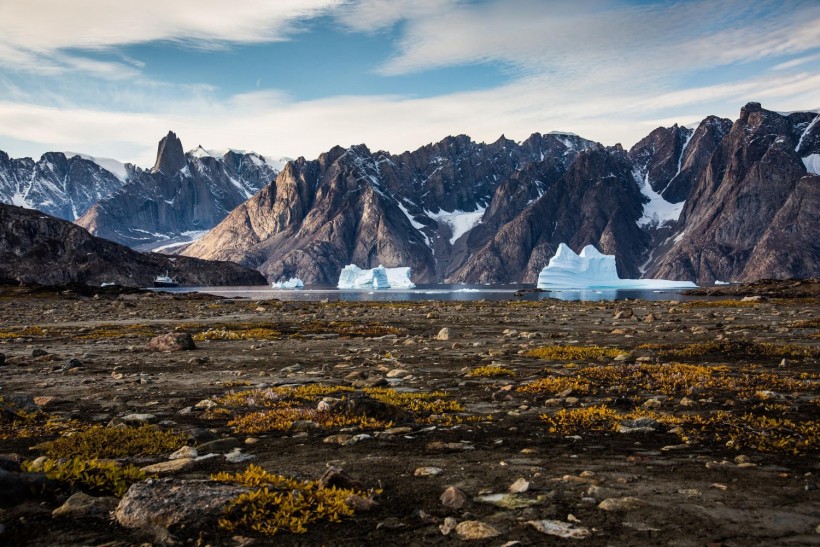The UN Educational, Scientific, and Cultural Organization (UNESCO) warned on Thursday that at least one-third of World Heritage sites with glaciers might lose after more than 20 years even if emissions are reduced.
UN said in a report that Yosemite's glaciers, also known as Yellowstone National Park's ice patches, and the few remaining glaciers in Africa will disappear in 2050.
The Paris-based UNESCO added in its report that other glaciers could only be rescued if greenhouse gas emissions "are drastically cut" and global warming is kept to 1.5 degrees Celsius.

Mountains Snow Glacier
Africa's Last Glaciers are Threatened
According to the UN report, Africa's last glaciers could be inevitably lost by 2050. These include some of the world heritage sites in Eastern Africa.
Mount Kilimanjaro glaciers are reported to be vanishing regardless of the actions to combat climate change.
The Rwenzori Mountains, which have been dubbed the "African Alps'', the "Mountains of the Moon" and the "Snowy Source of the Nile" are also threatened. In 2014, the CNN published a story encouraging travelers to trek Rwenzori mountains and get the chance to see some of the last disappearing glaciers of the mountains.
UNESCO Says Glaciers Will Melt by 2050
An investigation of 18,600 glaciers discovered at 50 UN-accredited World Heritage sites. Yahoo! News wrote that at least a third of the sites would vanish due to the glaciers' faster retreat brought on by climate change.
According to BBC News, 17 global heritage sites have been identified where glaciers are predicted to disappear by 2050. UN also warned that between 33 percent and 60 percent of the volume of these glaciers is predicted to melt by the year 2100.
Hyrcanian Forests, Durmitor National Park, Virunga National Park, Huanlong Scenic and Historic Interest Area, Yellowstone National Park, Mount Kenya National Park/Natural Forest, Rwenzori Mountains National Park, Putorana Plateau, Swiss Tectonic Arena Sardona, Nahanni National Park, Lorentz National Park, Natural System Of Wrangel Island Reserve, Kilimanjaro National Park, and Yosemite Nation are a few of the 17
Notably, the last glaciers in Yosemite National Park in the United States and Kilimanjaro National Park in Tanzania may melt by 2050 due to rising temperatures.
ALSO READ: Himalayan Plateau Threatening Rapid Fall Down Due to Thawing Permafrost
Cutting Down on Emissions May Help, UN Said
According to University of Buffalo glaciologist Beata Csatho, glaciers were still stable in the middle of the 1990s. But as the years go by, they are melting more quickly because of the rising temperatures. UN News pointed out that the impact of greenhouse gases, including carbon dioxide, methane, and nitrous oxide, causes climate change.
Leaders and major companies are urged to act quickly to save these world heritage sites, according to UNESCO project officer Tales Carvalho Resende, who is also one of the authors of the climate change report.
"If we can manage to drastically cut emissions, we will be able to save most of these glaciers," said Resende per Energy Live News.
According to Meta, IT businesses are the leading emitters of carbon dioxide since they produce large quantities of electronic devices like cell phones, desktop computers, laptops, and more.
In addition to the probable destruction of the cultural monuments, UNESCO discovered that the Earth's sea level would increase by 4.5% between 2000 and 2020 due to glaciers melting during the previous two decades.
In addition, many towns rely on glaciers as a vital water supply for people and crops. The Conversation reports that about two billion people depend on glacial water. In many regions of the world, a lack of water supplies might result from the destruction of cultural heritage monuments.
RELATED ARTICLE: ESA Shows Spooky 'Halloween Crack' of Antarctica's Brunt Ice Shelf [Look]
Check out more news and information on Climate Change in Science Times.
* This is a contributed article and this content does not necessarily represent the views of sciencetimes.com














